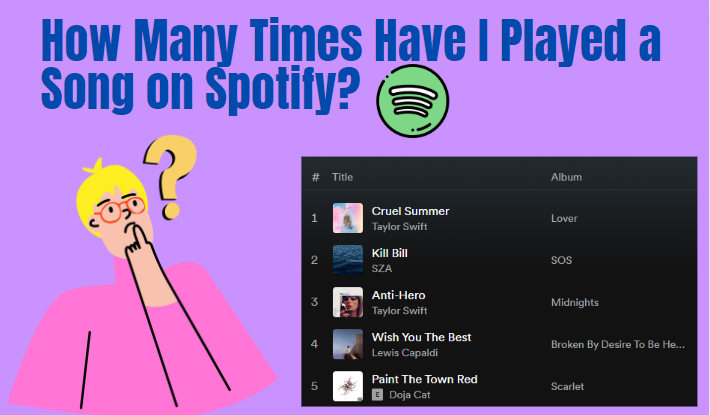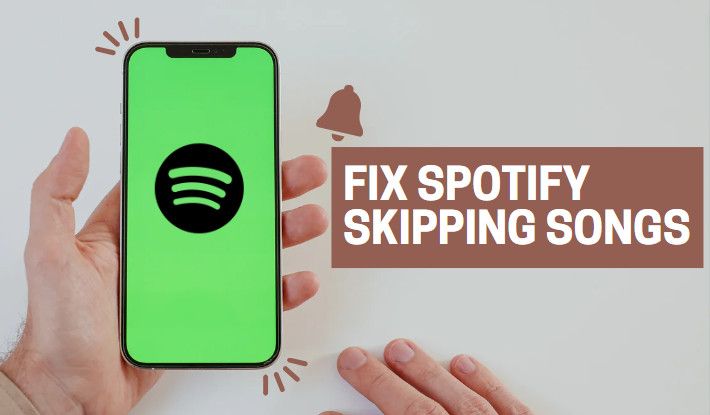4 Top Methods to Stop Spotify from Playing Suggested Songs
Spotify, a standout in the world of music streaming, has cutting-edge technology in recommending new music. However, some users find the suggested songs feature a bit intrusive, interrupting the carefully crafted flow of their playlists. Fear not! In this comprehensive guide, we'll explore the ins and outs of Spotify's suggested songs and provide you with step-by-step instructions on how to stop Spotify from playing suggested songs, regaining control of your listening experience.
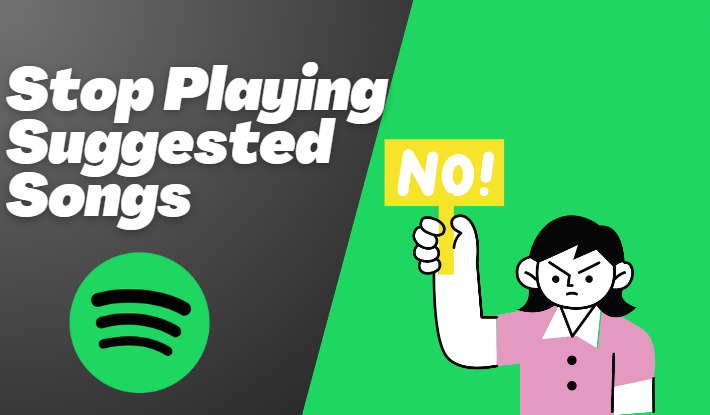
Part 1. Why Does Spotify Play Suggested Songs Automatically?
Spotify aims to provide its users with an immersive and personalized music listening experience as one of its primary objectives. The platform uses a sophisticated recommendation algorithm that analyzes your listening habits, preferences, and broader music trends to curate personalized playlists. This algorithm generates suggested songs based on your musical taste, aiming to introduce you to artists, genres, or tracks that align with your interests.
The intention behind playing suggested songs automatically is to create a dynamic and engaging listening experience. Spotify believes that by seamlessly integrating new discoveries into your playlists, you can enjoy a diverse range of music without actively seeking out new content. The algorithm is designed to adapt to your evolving preferences over time, continually refining its recommendations to better match your taste.
However, this feature has received mixed reactions from users. While some appreciate the serendipity of discovering fresh tracks, others find it disruptive, particularly when it interrupts a curated playlist or a specific mood they've set. With these in mind, let's delve into how to stop Spotify from playing suggested songs in the next part.
Part 2. How to Stop Spotify from Playing Suggested Songs?
Now, let's get to the heart of the matter. Whether you're on your mobile device or desktop, we'll walk you through a detailed, step-by-step guide on how to turn off Spotify's suggested songs. By following these instructions, you'll regain control of your playlists and enjoy an uninterrupted musical journey.
Part 2-1. Turn Off Smart Shuffle on Spotify
Smart Shuffle is a feature on Spotify that automatically intersperses suggested songs within your playlists. While this may introduce you to new music, it can disrupt the flow you meticulously crafted. Fortunately, you can disable Smart Shuffle and regain command over your listening sessions.
On Mobile:
Step 1 Begin by launching the Spotify application on your device and signing in to your account.
Step 2 Navigate to the playlist or Liked Songs that currently has Smart Shuffle activated.
Step 3 Locate the cross arrow icon embellished with a sparkle within the playlist profile, and give it a tap.
Step 4 Continue tapping until the icon transitions to a grey hue, signifying the deactivation of Smart Shuffle.
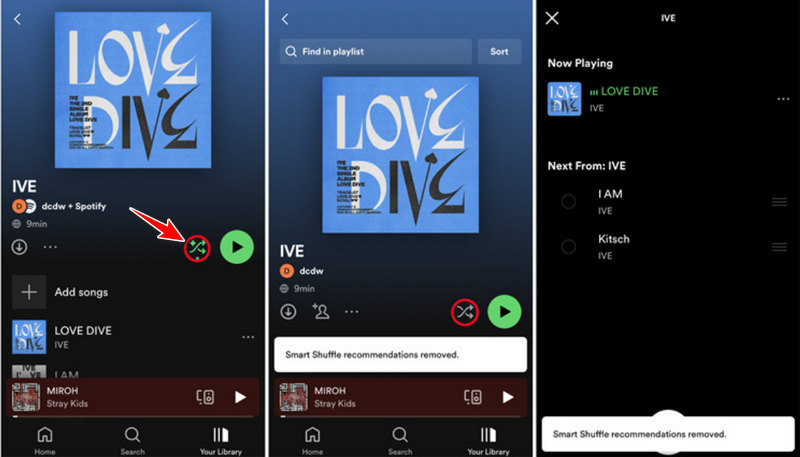
On Desktop:
Step 1 Open the Spotify Web Player in your browser or launch the application and sign in to your account.
Step 2 Select the playlist or album you wish to hear without automatic play and open it
Step 3 Within the Play Now interface, disable the Smart Shuffle feature by selecting the green "Shuffle" icon adjacent to the playback controls once more until it changes to white.
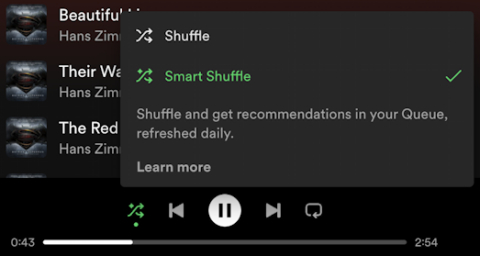
Part 2-2. Disable Autoplay on Spotify
Autoplay on Spotify is the feature responsible for the automatic playback of suggested songs after your selected playlist or album concludes. To regain full control over your listening sessions, let's explore how to disable Autoplay effectively.
On Mobile:
Step 1 Launch the Spotify application on your mobile device.
Step 2 Select the "Home" tab on the Spotify screen.
Step 3 In the upper-right corner, tap on the gear icon to enter the "Settings" menu.
Step 4 Within the "Settings" interface, navigate down to the "Playback" section.
Step 5 Locate the "Autoplay" option in this section. Switch it off to deactivate autoplay.
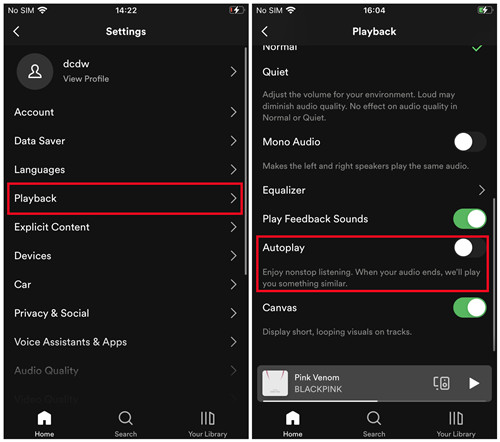
On Desktop:
Step 1 Open the Spotify application or web player on your computer. Then log into your account.
Step 2 Click on your profile icon and select "Settings" from the drop-down list.
Step 3 On the new screen, scroll down until you find the "Autoplay" section.
Step 4 Switch the toggle to the off position to deactivate autoplay.
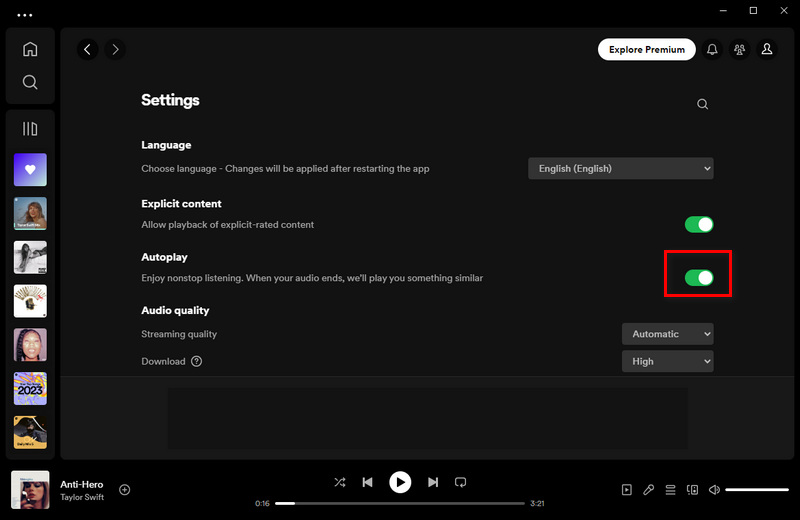
Part 2-3. Enable Offline Mode on Spotify
When Offline Mode is activated, Spotify won't have access to the internet to fetch new song suggestions, and as a result, it will only play the songs that have been downloaded to your device. This can be a handy solution if you prefer to have more control over your listening experience and avoid interruptions caused by suggested songs. Meanwhile, make sure you have downloaded Spotify playlists and albums.
On Mobile:
Step 1 Launch the Spotify app and log into a Premium account.
Step 2 Find the playlist or album you wish to play and initiate the download process by selecting the "Download" button.
Step 3 Once the content is downloaded, access the "Settings" and scroll to the "Playback" section.
Step 4 Activate Offline Mode by toggling the "Offline" option.
Step 5 Head to the downloaded playlist or album, press play, and enjoy your music without Spotify playing suggested songs automatically.
On Desktop (Windows):
Step 1 Open the Spotify app and log into your account.
Step 2 Click the three dots in the upper left corner and select "File".
Step 3 Check the "Offline Mode" option from the drop-down list.
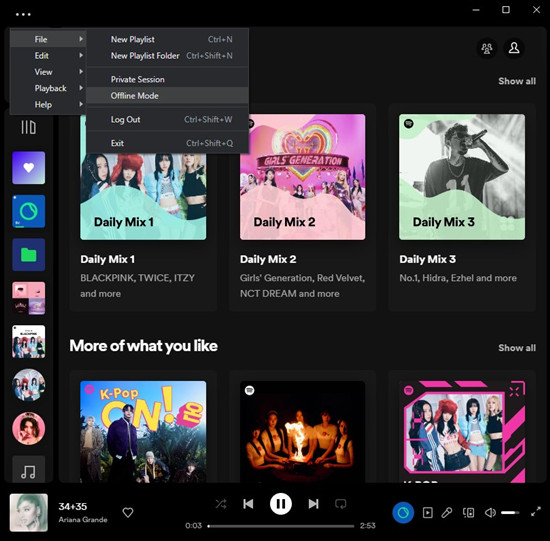
On Desktop (Mac):
Step 1 Open the Spotify app and sign into your account.
Step 2 Select the Spotify window, then select the "Apple menu > Offline Mode" on the top.
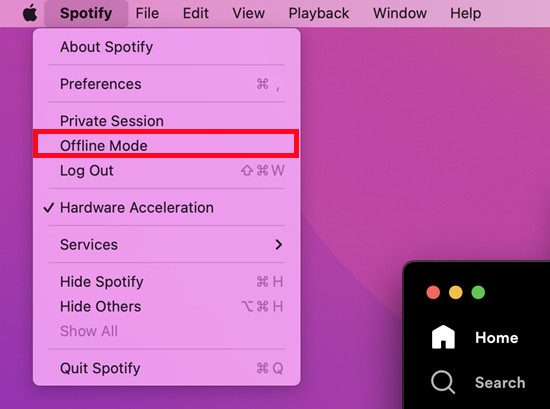
Part 2-4. Play Spotify Music Beyond Spotify Web or App
While Spotify offers a fantastic music streaming experience within its web and app interfaces, you may encounter Spotify playing suggested songs automatically, which is out of your plan. To stop Spotify from playing recommended songs, you have one more way - play Spotify songs beyond its web player or app. In this case, your listening experience is no longer affected by Spotify's algorithm, and you can play any song you want.
Part 2-4-1. Download Spotify Music to Local Computers
Kigo Music One is designed as a solution to address any problems and troubles brought by Spotify and other music streaming services. This tool can download any song, playlist, album, or podcast from Spotify onto your local computer. By converting Spotify music to common audio files, you can transfer the songs to an MP3 player or upload them to a media player, ensuring that only the existing songs can be played. On the other hand, Kigo Music One is capable of preserving the original quality of Spotify music, up to 320kbps. You can still get the same experience beyond Spotify.

Key Features of Kigo Music One
- Download music from Spotify, Apple Music, Amazon Music, TIDAL, etc.
- Convert Spotify music to MP3, FLAC, WAV, AAC, AIFF, ALAC.
- Preserve 320kbps high-quality Spotify audio, full ID3 tags, and track lyrics.
- Run at 10x faster speed & batch download.
- Sort Spotify music files by playlist, artist, album, etc.
- Support Spotify Free or Spotify Premium account.
- Activate the permanent playback of Spotify music.
Windows 11/10/8/7 Free Download
macOS 11 or later
Step 1 Open Kigo Music One and Select Spotify Portal
Begin Kigo Music One after installing it. Opt for Spotify on the main interface. Additionally, you can choose between the app source, requiring a Spotify app installed on your computer, or the web player source, functioning through access to the embedded Spotify web player. Then log into your Spotify account.
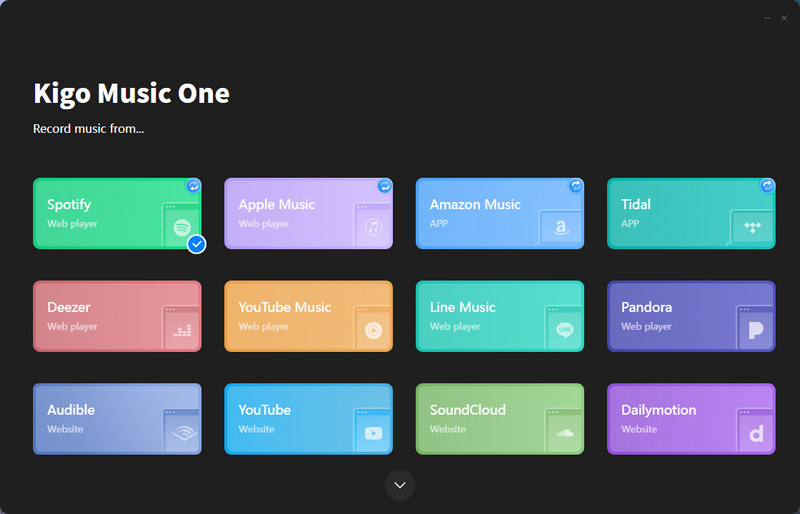
Step 2 Add Any Spotify Songs to Kigo
Open your desired Spotify song, playlist, or album. Click on the blue "+" icon in the lower right. Kigo Music One will analyze the songs and showcase them in a popup window. Select your preferred songs and click on "Add" to include them in the download list. Should you wish to add more tracks, simply replicate this process.
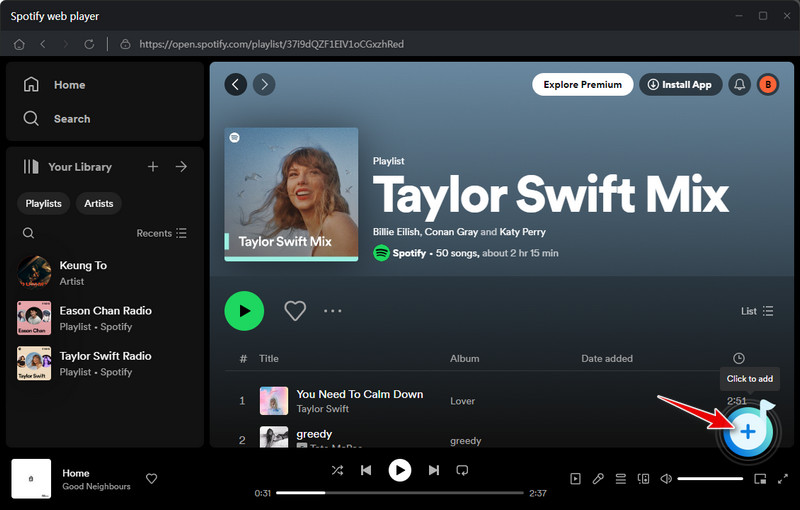
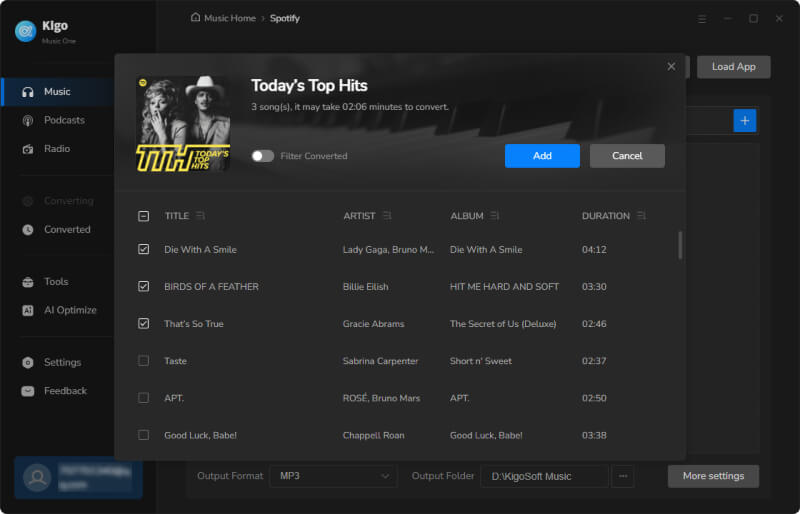
Step 3 Change Output Settings Accordingly
Kigo Music One offers various customized options. Simply go to the "Settings" panel. Choose an output format, bitrate, sample rate, and output path. Additionally, you can rename the output files and select a way to sort the output files into folders by artist, album, playlist, etc.

Step 4 Start Downloading Spotify Songs
Go to the Home tab and click on the "Convert" button to start the download process at once. Kigo Music One will then process Spotify music at a fast speed, up to 10x. During the process, both the original music quality and ID3 tags are well preserved.
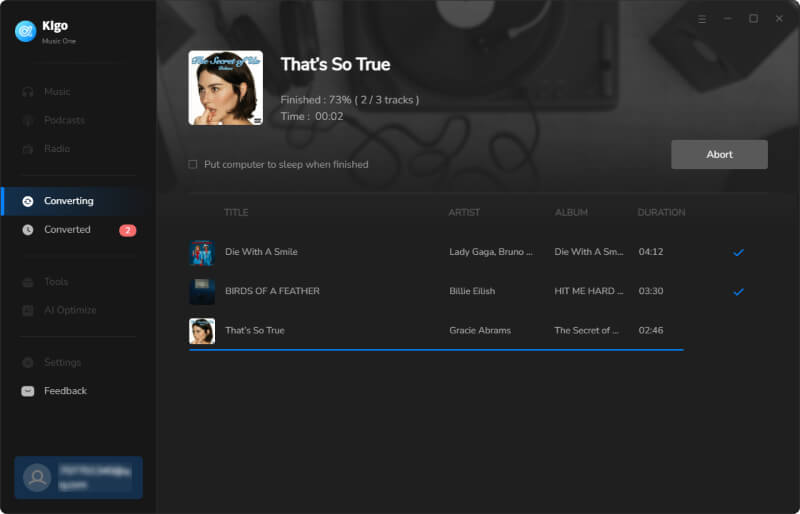
Step 5 Check Downloaded Spotify Songs
After the conversion is finished, you can go to the "Converted" tab to check your download history. If you want to open the output folder and check the audio files, click on the file icon within the item. Additionally, Kigo Music One offers a built-in player, so you can play the converted songs without any restrictions.
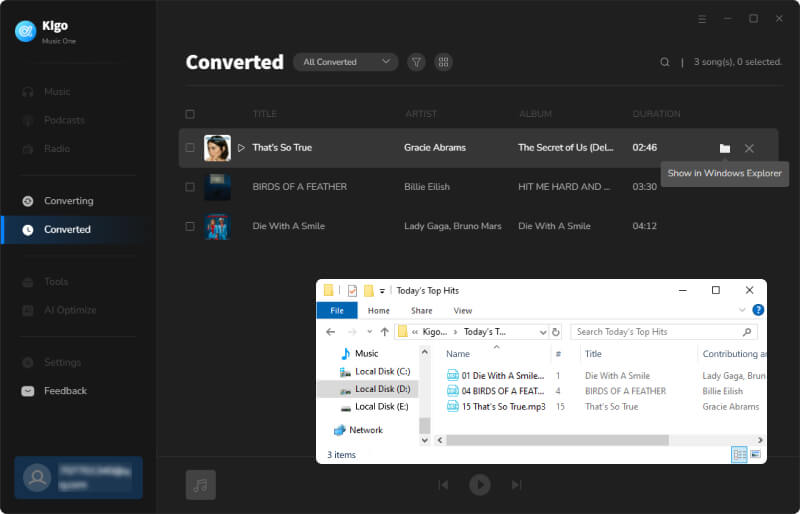
Part 2-4-2. Play Spotify Music on iTunes
iTunes is a popular media player among users, usually used for playing Apple Music songs. However, you can also play Spotify music by downloading the songs with the assistance of Kigo Music One. Based on this great demand, Kigo Music One offers a handy tool that allows you to export the converted Spotify music to iTunes with just 3 simple steps.
Step 1 After the conversion, go to the "Converted" tab and select the Spotify songs you want to export.
Step 2 Click on the four-square icon at the top and select "Export to iTunes/Music" from the drop-down list.
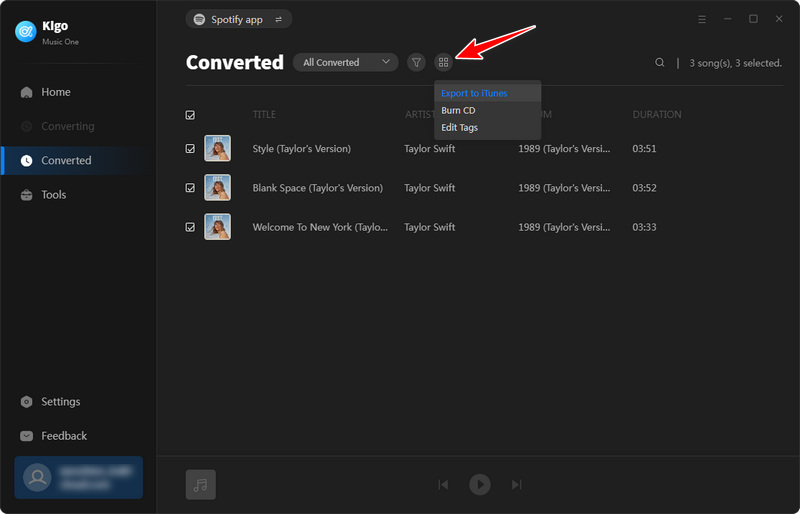
Step 3 In the following pop-up window, name the playlist as you wish and click on "Start Exporting" to begin the transfer. When it is complete, you can find the Spotify songs in your iTunes library and play them without interruption.
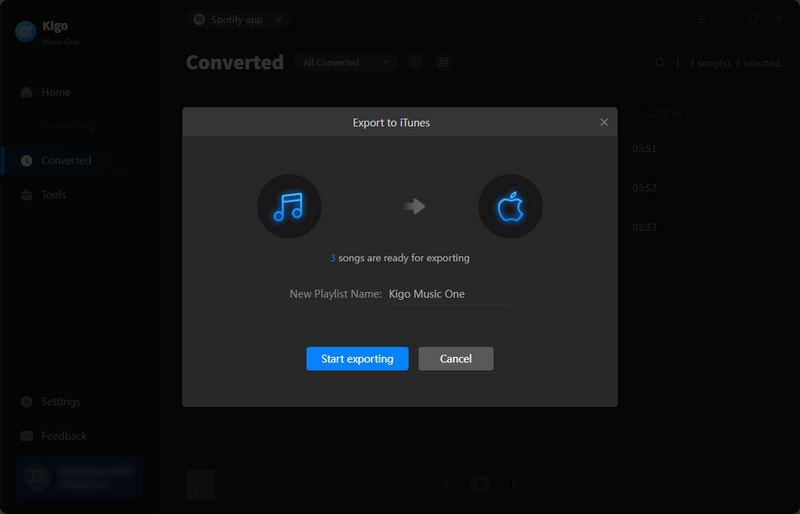
Part 2-4-3. Play Spotify Music on Windows Media Player
For Windows users, we would like to kindly introduce how to play Spotify music on Windows Media Player, which also has a large user base.
Step 1 Find and open Windows Media Player on your computer.
Step 2 Open the output folder that you selected in the Settings on Kigo Music One.
Step 3 Click and hold the Spotify music files, then drag and drop them into WMP. Afterward, you can click the Play button and enjoy Spotify music without interruption.

Part 3. Frequently Asked Questions
Q1. Why is my Spotify playlist playing suggested songs?
Spotify aims to provide you with a personalized listening experience and help to find new music, so you will listen to some new songs in your playlists with some features turned on.
Q2. How do I turn off recommended songs on Spotify?
You can follow the parts and steps above to turn off the Smart Shuffle feature, disable autoplay, etc., to prevent Spotify from playing recommended song and play the songs only in your curated playlists.
Q3. Can I get suggested songs again after stopping Spotify from recommending music?
Yes. The methods help to turn off the feature of suggesting new songs but do not block you from permanently getting new songs. You can get suggested songs again from Spotify by taking the opposite steps, for example, enable Smart Shuffle and autoplay or disable the offline mode.
Conclusion
Spotify aims to enhance your listening experience and help you find the music you may like in the way of suggesting new songs during your listening sessions. But if you want to listen to only your songs, you can turn off Spotify's recommendation feature.
This article introduces 4 methods on how to stop Spotify from playing suggested songs. To be specific, you can turn off the Smart Shuffle feature, disable Autoplay, and enable the offline mode. Additionally, you can play Spotify music with other players after downloading the songs with Kigo Music One. Simply pick the method you prefer and enjoy a wonderful listening experience without interruption.
Note: The trial version allows you to download only the first minutes of each file. To access the full length, please unlock it with a valid license code.

Ava Hamilton | Senior Writer
She has been working in the audio and video industry for many years and is familiar with various mainstream audio and video streaming platforms. She has shared a lot of information about audio and video conversion tools, technologies and trends, and provided professional suggestions, detailed reviews and guides.



